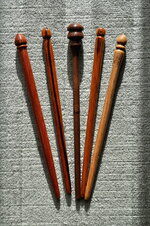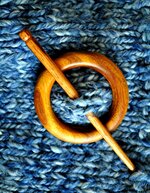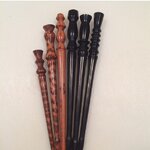monophoto
Member
One of the women in my wife's knitting group asked if I could make shawl pins. Naturally, my response was 'what the heck are shawl pins?"
So after some research, this is what I came up with. They are about 5" long, with a 'working diameter' of about 1/4", tapered slightly at one end, and with a decorative cap at the other end. They are used to hold knitted shawls closed.
The neat thing is that they are made from scraps of wood that would otherwise have gone into the burn box.
Left to right, these are bubinga, goncalo alves, walnut, goncalo alves, and ash. The finish is a lacquer-based friction polish (WOP on the ash).
So after some research, this is what I came up with. They are about 5" long, with a 'working diameter' of about 1/4", tapered slightly at one end, and with a decorative cap at the other end. They are used to hold knitted shawls closed.
The neat thing is that they are made from scraps of wood that would otherwise have gone into the burn box.
Left to right, these are bubinga, goncalo alves, walnut, goncalo alves, and ash. The finish is a lacquer-based friction polish (WOP on the ash).
Attachments
Last edited:



